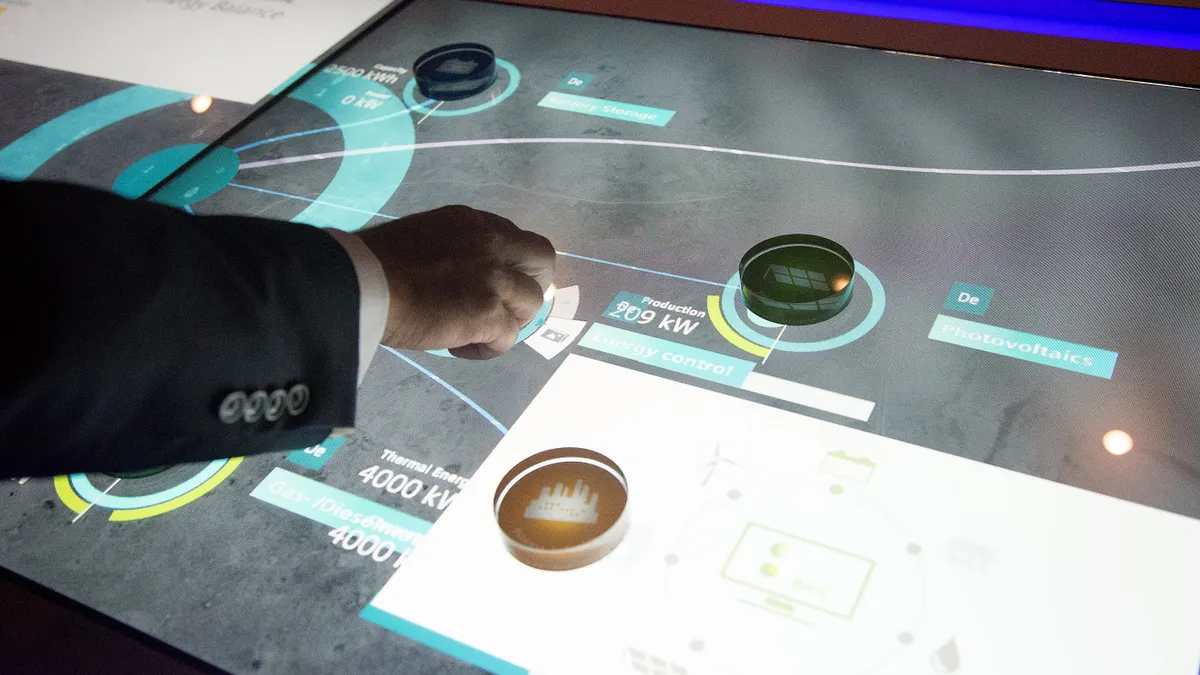The Santa Rita Jail in Alameda County, California, houses 4,000 inmates and has an electric load of about 3 MW, partly served via a smart microgrid, installed as a field demonstration of an autonomous and decentralized control concept.
As more clean and distributed resources come onto today's utility grids, critical loads are increasingly turning to microgrids to ensure power stability. New control technologies can help keep costs down, while allowing for increasing penetration of renewables.
The Santa Rita system includes solar, wind, battery storage and a fuel cell. And once assembled, "it just worked," said Robert Lasseter, an engineering professor at the University of Wisconsin and a principle investigator of the CERTS MIcrogrid Concept.
Typically, a microgrid will require expensive control components, along with site-specific commissioning that can also add time and expense. But the Santa Rita Jail system was largely a plug-and-play setup using the new concept.
"That was the biggest compliment I've ever gotten on this," Lasseter told Utility Dive. "You don't have to fine-tune in the field. If [components] test out in the factory, that's it."
CERTS stands for the Consortium for Electric Reliability Technology Solutions, and was multi-year collaboration funded by the U.S. Department of Energy's Office of Electricity. It brought together several national laboratories, universities and industry partners, including American Electric Power, which operated the test bed.
The basic idea was to develop a microgrid capable of operating using decentralized, autonomous control algorithms in order to allow active elements to operate in coordination. The approach can reduce the costs of some microgrids, a final report on the project concluded, by eliminating the need for a master controller or central storage unit to set voltage and frequency.
Microgrids rising
Microgrid deployment is on the rise — in the fourth quarter of 2018, Navigant Research identified 2,258 projects representing more than 19.5 GW of planned and installed power capacity around the world.
At the same time, data from the National Renewable Energy Laboratory shows controller costs per megawatt range from $6,200 to $470,000, with a mean of $155,000. That's a wide range, but NREL also noted that controller costs "show a generally downward trend as capacity increases for projects with capacities of 2 MW or more."
"I hear more and more complaints that microgrids are too expensive," Lasseter said. But the CERTS approach to grid control can help lower costs, particularly for smaller systems.
The research focused on developing new methods for coordinating the operation of both directly-coupled distributed resources (like synchronous generators) and inverter-coupled sources (often solar, wind and energy storage).
"As a result of these innovations, autonomous control lowers the total cost of a microgrid compared to other designs because autonomous control greatly reduces the site-specific costs of commissioning and maintaining grid-independent operations," according to the project report, which was published in September.
Those costs are "significant," the report found, particularly for smaller microgrids with an aggregate installed generating capacity up to 20 MW. "Lowering these costs greatly improves the economics of smaller-scale microgrids," the report found.
Most inverters today are grid-following, he explained, meaning they need another source to provide voltage and frequency. Grid-following current source control, and grid-forming voltage source control, are two techniques that microgrids utilize to coordinate DERs behind an inverter and the grid.
The AEP test bed was located near Columbus, Ohio, and consisted initially of three Tecogen generators, four load banks and inverters with CERTS algorithms embedded.
The CERTS Microgrid Concept "entails operating each source as a grid-forming voltage source device," DOE's final report explains. "This may seem like a simple idea, but, historically, most inverter-based sources (such as PV and wind) have been designed to operate as grid-following current-source devices."
In simpler terms, said Lasseter, when using the CERTS control concept, "if you have a certain source and you change your load, you don't have to tell the source to do anything."
Commercializing the concept
The test bed was active from 2006 to 2017, though the research predates even that. Along with field projects, the collaboration also resulted in the commercialization of the concept. A company called Tecogen developed a gas combined heat and power system that utilizes the CERTS concept — and four of its units kept the lights on for five days, for a Greenwich Village, New York, luxury co-op building during Superstorm Sandy.
The final CERTS report notes that commissioning of both pre-commercial prototypes and commercial units for the project was "important for facilitating commercial adoption of successfully demonstrated innovations." To date, researchers say Tecogen has licensed CERTS algorithms for their InVerde 100 engine-generator, while Princeton Power Systems is using CERTS-compatible techniques on multiple energy storage product lines.
Lasseter has moved on from the CERTS project and is now working with Sandia National Laboratories on grid issues in Hawaii, where a high penetration of renewables has created frequency issues. The state is rapidly adding solar, but as more intermittent resources come onto the grid, there is a growing potential for instability.
"As more and more inverter-based small generators are put into our power system, how can we make sure it is stable?" asked Lasseter. Storage is one solution, but cost is often prohibitive, he Lasseter. New control ideas like the CERTS concept can allow for a greater renewables penetration and at a lower cost.
Utilities have thousands of distributed resources on their systems, he said. "You can't control them, it's too complicated. But you need them to behave appropriately," he said. "I think this will turn out to be a very good solution."























